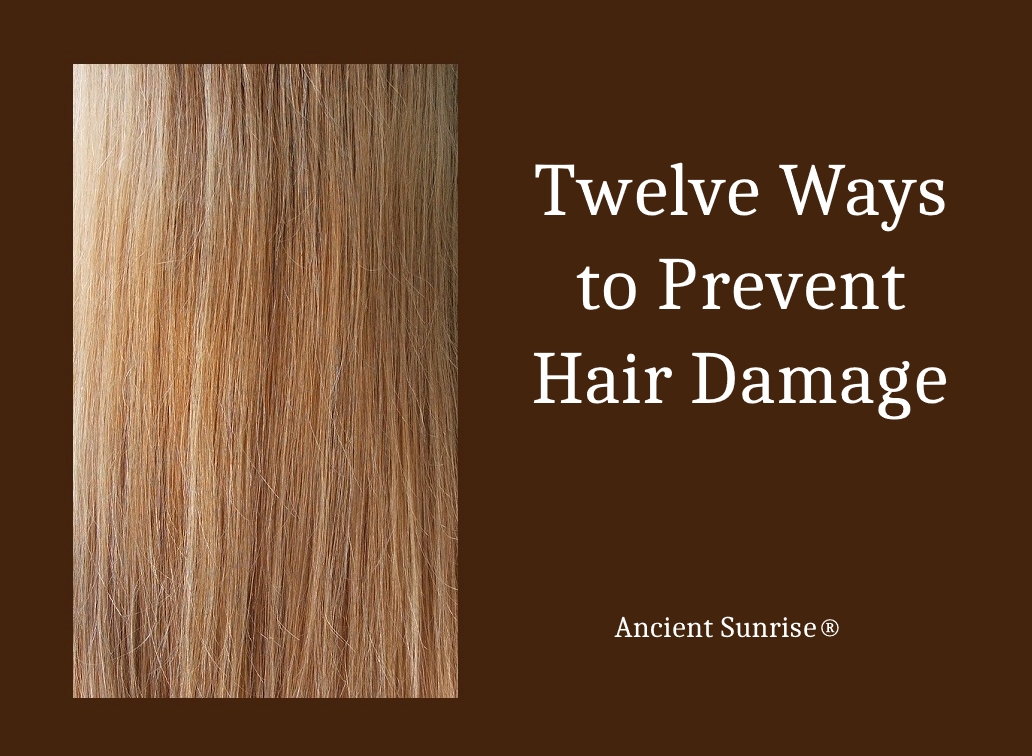
Human hair is a complex thing. Each strand consists of several layers which contribute to the structure, shape, and color of the hair. The outer layers are made of several tiny keratin scales (cuticles), which overlap like shingles. The core (cortex) of the hair strand consists of bundles of long, thin cells that contain melanin, the hair’s natural pigments. The hair also contains lipids, or fats, which balance moisture. Additional lipids are deposited onto the surface of the hair via the scalp’s sebaceous glands.
Healthy hair does pretty well at maintaining its own moisture levels. The sebum and keratin on the surface of the hair provide a hydrophobic barrier to prevent excess water from entering the cortex. It may sound counter-intuitive, but too much water is not good for the hair. If water enters the center of the hair strand, the cortex swells and the overall structure of the hair weakens. This is why hair becomes more stretchy when wet. Healthy hair will stretch to an extent, and bounce back. Hair that has been damaged will remain stretched, and break if stretched too far.
On the other hand, if the cortex is completely depleted of moisture, the hair becomes brittle, and breaks. Think of the cortex like a bundle of al-dente pasta. If it soaks up too much water, it becomes mushy and unstable. If it is desiccated, it becomes brittle and snaps.

Maintaining healthy hair requires keeping the keratin layers as intact as possible. When new hair growth exits the scalp, it has several layers of keratin cuticles which are tight and flat. Normal weathering causes the cuticles to lift, then chip away. If most or all of the layers erode, the cortex is exposed, and it unravels like the end of a rope. This is what causes split ends, also known as trichoschisis. There is no way to “fix” split ends, except to trim them away with professional shears (regular scissors can cause split ends). You cannot glue the cortex back together and put a new coating of keratin over it. Maintaining healthy hair is all about being proactive, not reactive. There is nothing that can reverse damage once it has occurred.
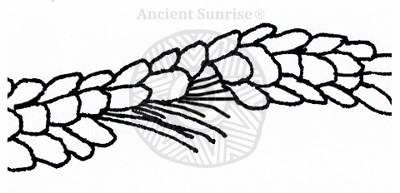
The biggest outside threats to hair health are friction and pulling (especially when the hair is wet), heat, UV exposure, and chemical processes. Friction causes the cuticles to lift, making the surface of each strand rougher. Strands then catch on each other, causing tangles. Lifted cuticles are like open doors for water to pass in and out. This is why damaged hair is stretchy and mushy when wet, and brittle when dry.
Heat drys out the hair and causes air pockets within the hair strands to expand. UV radiation breaks down melanin cells and melts the hair’s cortex, making it porous and brittle. Lightening agents, oxidative dyes, perms, and relaxer all use chemicals to break through the keratin layer to permanently alter the cortex to deposit dye, destroy melanin cells, or force the hair into a new shape. This creates weakness in both the internal and external structure of the hair.
While some weathering is normal and expected, there are many ways to reduce the amount of day-to-day damage. Here are a few ways to keep your hair happy and silky.
1. Squeeze and Wrap; Don’t Rub.
After showering or bathing, you might be tempted to grab a towel and rub it all over your head, or rub your hair between your towel like you are trying to start a fire with a stick. Don’t do it. Your hair is extra fragile when wet, and this amount of friction will add up in the long term. Repeated towel drying contributes to the weathering of the keratin scales that form the protective outer layers of the hair. Over time, this will lead to split ends [1].
Instead, gently press or squeeze your hair with the towel. Wrap your hair with the towel and allow it to gradually absorb the water out of your hair. Or gently shake the ends of your hair to flick away water droplets.
2. Don’t Brush Wet Hair Without the Right Tools.
This is similar to towel-drying the hair. Brushing, towel drying, and any form of friction on wet hair causes keratin cuticles to shed. Wet hair has reduced tensile strength, meaning it is more prone to stretching and snapping than dry hair. A study found that using a conditioning shampoo, in comparison to non-conditioning shampoos, reduced the amount of cuticle loss during wet hair combing [2]. This would make sense, as shampoos cleanse away the natural lipid layer of the hair, and lift the cuticle, increasing friction.
If you must comb your hair while it is wet, make sure the hair is conditioned, and use a wide-toothed comb, or a brush specially made for use on wet hair. Using a brush or comb made to be used on wet hair can be incredibly helpful. The tines and bristles are designed to prevent pulling and tugging, thus causing less friction. Work from the ends of your hair to your roots. Do not pull on a tangle. This will cause your hair to snap. Work out the knot from the bottom up.

3. Keep Your Hair Up
Loosely braiding your hair or keeping it in a twist protects it from friction and tangles during the day. This is especially helpful if you have long hair and it’s a windy day. Just be sure not to wrap hair ties too tightly, or force pins into a tight bun. This can cause stress on the hair. Pulling the hair too tightly into ponytails, braids, or twists can cause hair to pull out at the root. Over the course of time, this can lead to traction alopecia.
(Writer’s note: Back when I had long hair, I was a big fan of the octopus clip. It securely holds the hair up in a bun without pinching, or being too tight. Spellstone combs and barrettes are also wonderful, and styles are available for every hair type.)
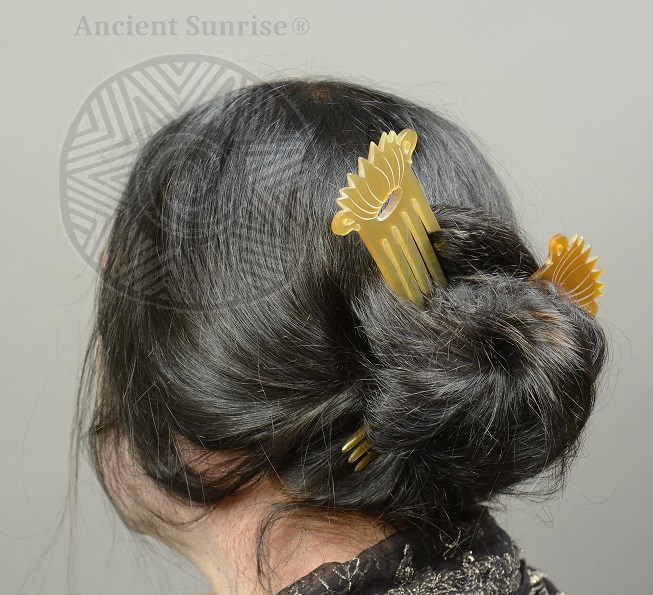
4. Avoid UV exposure
Hair is susceptible to UV damage. When hair becomes lighter in the summer, the melanin cells within the cortex are actually being destroyed by UV rays. There are two basic types of melanin n the hair. There are what provide the hair’s natural pigment. Pheomelanin is much more sensitive to UV radiation than eumelanin. Blonde, and red hair contains less eumelanin and more pheomelanin. When pheomelanin becomes degraded, UV exposure will eventually melt the hair’s core, causing the hair to become weak and brittle [3], [4].
The natural oils, or integral lipids, that exist within the hair fiber are also affected by UV radiation. Overexposure decreases these lipids, which exist to moisturize the hair and contribute to its flexibility. Over time, this leads to increased porosity, desiccation, and brittleness.
Covering the hair, and/or using henna protects against sun damage. More on henna in # 8.
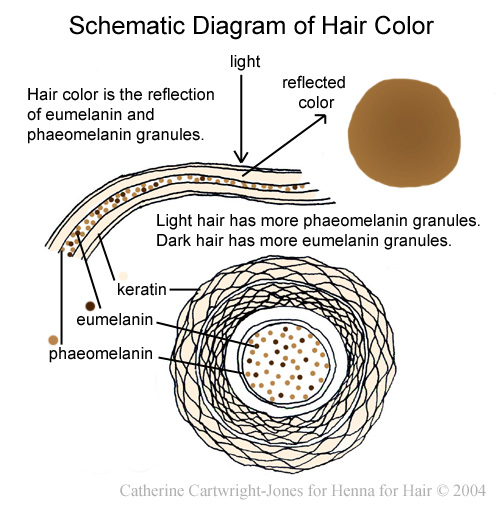
5. Protect Your Hair While You Sleep
If you toss and turn in your sleep, cotton and synthetic fabrics can cause your hair to tangle. If you prefer to shower at night, you’ll probably wake up and fight your bedhead with brushes and products, damaging it further in the process. Wrapping your hair in a silk scarf or using a silk pillowcase can decrease bedhead and damage.
Silk is very breathable and decreases friction. If you sweat during your sleep, silk is cooler and allows moisture to evaporate more quickly, keeping your hair drier. Just make sure you’re looking for actual silk, not a polyester satin, which can cause static and tangling.
6. Know How Often to Wash Your Hair
Each person produces a different amount of sebum. These oils protect and moisturize the skin and hair. However, too much sebum will become waxy, drawing dirt and dead skin cells, and clogging pores. Some people have naturally oily skin, and need to wash their hair every day. Others do so less frequently. If you have dry skin, or produce little sebum at the scalp, washing your hair too frequently, or washing with harsh surfactants like sodium lauryl sulfate might strip out the lipids from your hair and lift the cuticles. Shampooing dries the hair shaft and increases static and friction. Conditioning is meant to artificially restore lost lipids and smooth the cuticle layer.
If you have long hair, be aware that sebum gradually spreads from the scalp to the ends; the ends are drier than the roots. Oftentimes, it is only necessary to shampoo the scalp. The product that runs down the length of your hair while rinsing is enough to cleanse it without without completely stripping the lipids. Use conditioner in the opposite way. Apply only to the ends of the hair to avoid heaviness and buildup at the roots. It is better wash hair with cool water. Hot water can raise the cuticles, causing roughness and dryness. Cool water keeps the cuticle closed.
Hair has both surface lipids and integral lipids. In other words, there are oils that coat the hair strand, and oils that exist within the hair strand. Both contribute to the moisture and protection of the hair. Integral lipids can vary with a person’s ethnicity. While Asians have higher integral lipid levels, people of Caucasian and African descent have lower amounts of integral lipids. Over-shampooing can strip out integral lipids and lead to desiccation and breakage. UV exposure and chemical processes can also destroy integral lipids.
The consensus is in. The vast majority of dermatologists and hair experts agree that dry shampoo causes your hair more harm than good. The ingredients in dry shampoo absorb oil, giving the hair volume and making it look less greasy, but all of this just stays in the hair. The buildup of sebum and dry shampoo can eventually clog pores, causing infections. It can also lead to hair loss, as infected follicles cause the hair to shed. Dermatologists recommend using dry shampoo no more than twice a week.
7. Put Down the Dry Shampoo and Back Away
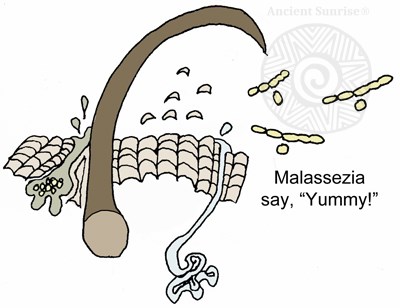
8. Moisturizing Products May Be Making Things Worse
Hair products use a variety of emollients and humectants to make the hair seem smoother and more moisturized. Not all of them work in the same way. Glycerin, or glycol, products draw moisture from the surrounding environment. This is find when there is humidity in the air. In dry environments, the product will actually draw moisture out of the hair.
Some ingredients form a barrier, preventing water from entering or exiting. Because damaged hair is particularly weak when wet, it needs to be able to get rid of the excess water in the cortex. Products that coat the hair in this way keeps the hair in a weaker state.
Silicone ingredients, like dimethicone, mask hair damage by filling and smoothing the surface of the hair with a slippery coating. Decreasing friction prevents future damage, but -cones inhibit the passage of moisture in and out of the hair. If it builds up, it acts similarly to sebum, drawing dirt and dead skin cells.
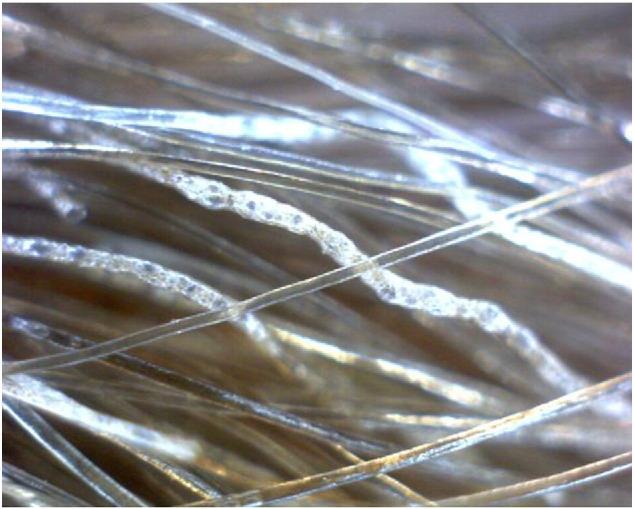
Overuse of conditioners or oils can lead to a vicious cycle of worsening hair condition. The product coats the hair and prevents moisture from entering, causing the hair to dry. People then try to correct or compensate for the dryness by using more and more conditioning treatments.
Hair needs to be able to retain the proper amount of water and lipids. Too much moisture leaves the hair weak and weighed down. Too little, and the hair becomes brittle. Henna, cassia, and zizyphus can help the hair maintain its moisture levels more effectively. Continue reading to learn how.
9. Limit Chemical Processes
Lightening agents, oxidative dyes, perms, and relaxers all involve chemically altering the structure of the hair. These processes destroy both the outer cuticles and the inner cortex of the hair strand in order to change the hair’s color or shape. This increases the hair’s porosity and decreases its strength and elasticity, leaving it vulnerable to breakage. A study by Robinson found that, while virgin hair exhibited progressive weathering root to tip, only hair that had been chemically processed showed patterns of fiber splitting at the mid-sections of the hair strand [1]. Cuticles were eroded until the cortical fibers were exposed, which then began to fragment. This type of damage leads to hair breaking off at any point in the length, not only the ends.
Bleaching the hair destroys the structural disulfide bonds in the keratin cuticle, and oxidizes the melanin within the cortex of the hair. Oxidative hair dyes also work by breaking these bonds so that dye molecules can enter the cortex, where they oxidize into larger molecules that cannot escape back out from the keratin layers. Hydrogen peroxide or hydrogen persulfate are used to break the keratin bonds to allow the bleach or dye to enter the cortex [4].
Perms and relaxers denature the disulfide bonds in order to alter the hair’s shape, using extremely alkaline chemicals such as ammonium thioglycollate, sodium hydroxide, and guanidine hydroxide [3], [4]. These processes all break down the hair’s hydrophobic barrier and increase softening and swelling of the hair fiber. The hair is then especially vulnerable to breakage from brushing and other sources of friction.
All of the tips discussed above can prevent further damage, but nothing can reverse hair damage. It is best to avoid chemical processes altogether; however, if you choose to do so, it is best to go to a certified stylist rather than attempting it at home. Stylists know how the correct products and techniques to use to avoid unnecessary damage. Products used in salons are often safer and gentler for the hair because they are regulated more strictly than products sold for at-home use.
10. Limit Heat Styling
Curlers and flat irons apply high heat directly to the hair in order to temporarily alter its shape. Because hair is naturally porous to some degree, there are tiny pockets within every hair strand. Damaged hair is more porous. Heat can cause the moisture within the pockets to expand, forming bubbles in the hair strand [4]. Long and frequent use of hair dryers can cause the “bubble hair” effect, as well.
Heat creates a low humidity environment which causes moisture to evaporate rapidly. This leads to desiccation, static, and structural damage [5], [6]. Interestingly enough, hair shows increased structural damage from heat if the it was initially wet, rather than dry; however, heat applied to dry hair causes signs of chemical damage as well as structural damage. One study suggests that using ethanol, or solvent-based protecting sprays prior to heat treatments is more effective than water-based sprays [5]. Better yet, skip the heat altogether.
Replace curling irons with no-heat curling methods. Allow hair to air dry most of the way, and finish it off with a hair dryer on a low setting. People with particularly damaged or porous hair have a dilemma. While drying the hair with a blow-dryer can be damaging, leaving the hair wet for long periods of time may also lead to damage [6]. It will be up to the individual to monitor their hair’s health and moderate their techniques. Gentle towel drying and a hair dryer on the cool setting may be the best option.

Source: Monselise, Assaf, David E. Cohen, Rita Wanser, and Jerry Shapiro. “What ages hair?.” International journal of women’s dermatology 3, no. 1 Suppl (2017): S52.
11. Condition with Ancient Sunrise® Henna or Cassia
The dye molecules in henna and cassia bind to keratin on the surface layers of the hair without coating it. This adds to the structural integrity of the hair strand. Porous, damaged hair becomes smoother and better at retaining proper moisture levels. Hair that stretches too much becomes more resilient. Henna and cassia provide long-lasting shine that doesn’t wash out, unlike conditioners.
Henna is permanent, and dyes hair red. When used with indigo, it dyes hair shades of brunette to black. Cassia provides a translucent golden dye on light hair, and no color change on darker hair. Cassia can be used without dye release to condition hair with minimal color change.
Henna also provides natural UV protection. It does this by reflecting and absorbing at the surface of the hair before it can penetrate to the cortex. This inhibits the degradation of melanin cells.
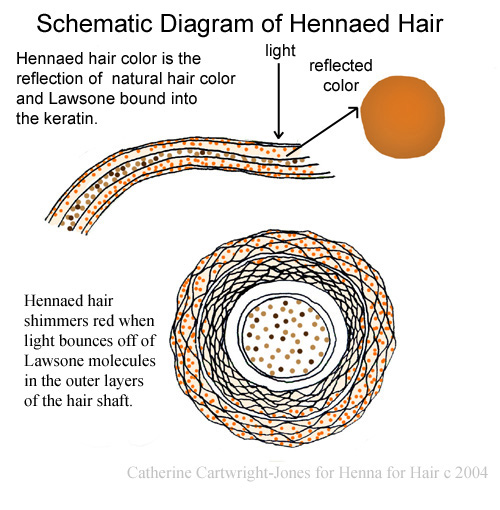
12. Cleanse and Condition with Ancient Sunrise® Zizyphus
Zizyphus spina christi makes for a wonderful 2-in-1 cleansing and conditioning treatment. Unlike henna and cassia, it has no dye. Zizyphus powder contains natural saponins and plant waxes. It gently cleans the hair without stripping it, and a thin layer of plant wax restores the hair’s hydrophobic barrier while providing shine. It is especially great for thin, weak, and damaged hair because it provides thickness and strength, and protects hair from excess water absorption. Zizyphus is great to use before traveling, as it protects the hair from wind and salt water. To learn more about how to use zizyphus, read this article and visit this page on Henna for Hair.
References
[1] Robinson, V. N. E. “A study of damaged hair.” J Soc Cosmet Chem 27 (1976): 155-161.
[2] Sandhu, Sukhvinder S., and Ram Ramachandran. “A simple and sensitive method using protein loss measurements to evaluate damage to human hair.” J. Soc. Cosmet. Chem 46 (1995): 39-52.
[3] Sinclair, Rodney D. “Healthy hair: what is it?.” In Journal of investigative dermatology symposium proceedings, vol. 12, no. 2, pp. 2-5. Elsevier, 2007.
[4] Monselise, Assaf, David E. Cohen, Rita Wanser, and Jerry Shapiro. “What ages hair?.” International journal of women’s dermatology 3, no. 1 Suppl (2017): S52.
[5] Christian, Paul, Nigel Winsey, Marie Whatmough, and Paul A. Cornwell. “The effects of water on heat-styling damage.” Journal of cosmetic science 62, no. 1 (2011): 15.
[6] Lee, Yoonhee, Youn-Duk Kim, Hye-Jin Hyun, Long-quan Pi, Xinghai Jin, and Won-Soo Lee. “Hair shaft damage from heat and drying time of hair dryer.” Annals of dermatology 23, no. 4 (2011): 455-462.
Author: Rebecca Chou November 2017
Edited: Maria Moore September 2022

Hi Rebecca,
I was wondering how much is zizyphus sounds like something I should try.let me know. Ty
Zizyphus is great for all hair types! Some people who have latex allergies get cross reactions with ziz, but otherwise you’d be fine. It makes your hair sleek and shiny! More info here: http://hennaforhair.com/hair-care/ziz/index.html